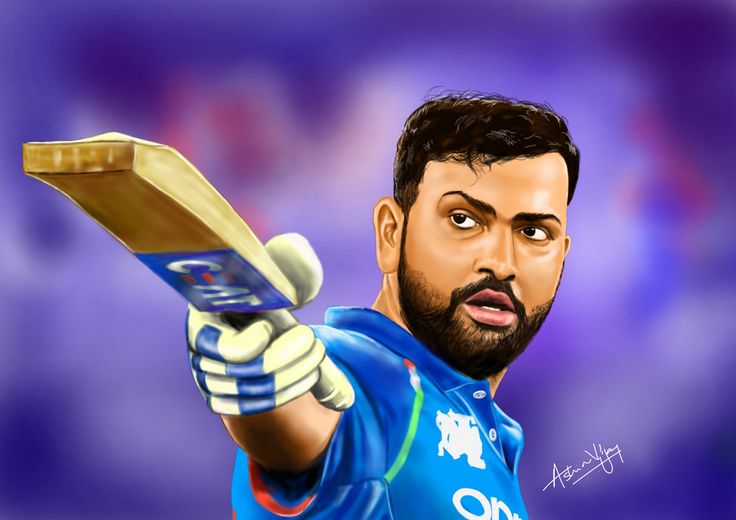Why should team management consider Virat Kohli and Rohit Sharma for the ODI World Cup 2027?
Virat Kohli and Rohit Sharma’s ODI future is in doubt, but here’s why India should still consider the legendary duo for the 2027 World Cup experience, records, and match-winning pedigree.

The talk has turned serious: the two current cornerstones of Indian cricket (Rohit Sharma and Virat Kohli) may not be in the picture for the 2027 ODI World Cup in South Africa. It has been suggested that the three-match ODI series against Australia (in October this year 2025) could be their last unless they play the domestic Vijay Hazare Trophy to show their form and fitness.
In a world where fans have watched these two potentially carry Indian cricket's batting hopes for more than a decade, the idea is nothing short of earth-shattering. Kohli and Rohit have already said goodbye to T20Is and Tests, assuming we will ever see them in white-ball cricket is a little hard to imagine, it is like imagining a stage play without its lead actors. While it is paramount that young talent is produced and that succession planning is undertaken, there are compelling reasons why Indian cricket should keep the door significantly ajar for these two greats.
1. The Ultimate Big-Tournament Players
World Cups are not just another series; there is nothing bigger in the game. In the years to come, Kohli and Rohit have delivered much more than consistently.
- Rohit Sharma was the top scorer in the 2019 edition with five centuries - you have to qualify anyone in World Cup history, intellectual and real.
- Virat Kohli has held the fort with vital chases almost every ICC tournament since then; his record in knockouts speaks volumes about his mental resolve.
When the pressure cooker is turned on maximum and your allotment for mistakes is zero, these are the people who have continually risen in times of critical action. Sure, the kids may have the skills, but this type of temperament only comes with experience.
2. Age Does Not Equal Decline
In 2027, Rohit will be 40, and Kohli will be 39, ages when athletes in cricket phase into their final stretch. We have also communicated that fitness training and fitness recovery are different beasts today, with the methods available in a constantly changing landscape of recovery. Kohli has changed the narrative when it comes to Indian cricket’s culture of fitness and performance. Kohli has reimagined fitness, exhibiting undeniable endurance and exceptional agility. Rohit, though he has had an injury here and there, remains a sharp cricketer in the field of play and runs between the wickets.
Presently, many greats in the game have been playing at the world-class level into their late thirties and early forties all around the globe. At forty, Misbah-ul-Haq led Pakistan to a World Cup semi-final, and Chris Gayle was playing T20 World Cups at forty-two. It should be on form and fitness, and not a calendar birth date.
3. Their ODI Fortress is Still Unassailable
These two players are not just veterans; they are still among the top players in the format:
- Virat Kohli 302 matches, 14,181 runs, average 57.88, 51 hundreds.
- Rohit Sharma 273 matches, 11,168 runs, average 48.76, 32 hundreds, and the only player in history with three ODI double hundreds.
These are not the numbers of two players living on past reputations - these numbers are active evidence of world-class contribution.
4. Leadership and Mentorship
Even if the management is looking to bring in some new leadership for Shubman Gill or another new captain, taking Rohit and Kohli along to the squad for 2027 could be a huge benefit. They could help mentor the developing batters, particularly in the higher-pressure phases of the tournament. They could provide feedback for tactical decisions.
The combination of youthful exuberance and experienced calm normally wins tournaments; it's the combination that has seen India win the T20 World Cup in 2007 and the ODI World Cup in 2011.
5. Transition is Easiest When it is Ongoing
Cricketing transitions are the most effective when done with care. The evolution from Sachin-Dravid-Ganguly-Laxman to Dhoni-Kohli-Rohit did not occur spontaneously. The senior players remained long enough for the next generation to step in while still being able to provide on-field support.
Elimination of Rohit and Kohli at the same time would create a leadership void and not allow younger players to take advantage of learning from two of the best limited-overs batters in history.
6. The 2027 World Cup Will be in South Africa
South African conditions typically require experience and adaptability; the pitches can be problematic with decent pace and seaming movement. If we factor in Rohit's security in Australian and South African conditions, along with Kohli's phenomenal overall overseas batting aggregate, India has an intrinsic advantage in terms of overcoming challenges. The proven ability to adapt is likely to be the defining competence in close-fought contests.
No one can say Indian cricket lacks young batting talent: Shubman Gill, Yashasvi Jaiswal, Ruturaj Gaikwad, Rinku Singh, and so on, but let’s be clear: we are not looking to the 2027 World Cup for an investment in the future. We are looking to win in the present, when the tournament arrives.
If Rohit Sharma and Virat Kohli are still fit, motivated, and making runs, they have to be in that squad. Leaving them out simply for the sake of transition can be reckless and ultimately costly in terms of whether India is successful in winning the trophy. Great players can produce moments that change the game under extreme pressure.
A world of difference exists between people seeing Kohli punching the air after a winning cover drive, and Rohit raising the bat again for another century, compared to just being beautiful memories. They are much more defined as to why they should be on that biggest stage, one last time.
Tags:
POLL
Should Rohit Sharma be part of India’s squad for the 2027 World Cup?

373
total votes
3/1/2026
end date






.webp&w=1200&q=80)

